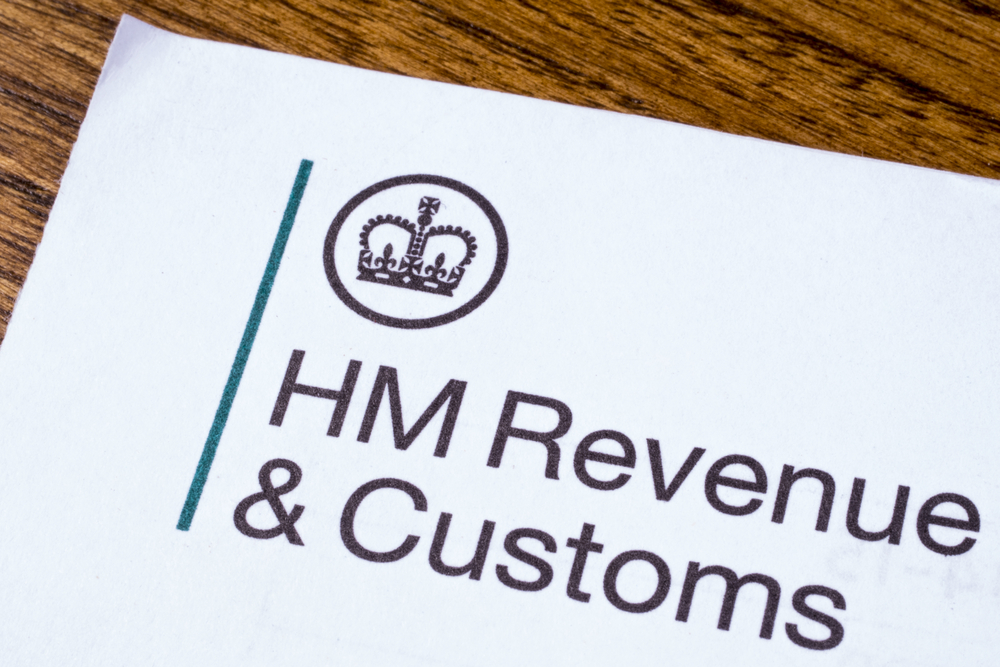In this guide, we’ll take a look at what you can do about company cash-flow problems, how they’re caused and the potential impact they can have on your business.
If you have more money going out of the business than you have coming in, you could have a problem. If this is only temporary, perhaps due to a seasonal dip in sales or a one-off purchase, this is an issue that should be easily resolved. However, if you consistently struggle to pay your staff or suppliers, make debt repayments when they become due or buy new stock, you need to act now.
Get Free Advice from Licensed Insolvency Practitioners
- If you submit this form, you’ll get a prompt response from someone who can offer advice.
- Our partners are fully licensed insolvency practitioners based in North London.
- Our recommendation is based on reviews, history, trading standards, ratings, satisfaction, trust & price.
- They offer over 100 years of combined partner experience.
- Your data will never be shared or misused.
- What Are Company Cash-flow Problems?
- Why Are Company Cash-flow Problems So Serious?
- Why Do Businesses Have Cash-flow Problems?
- Can A Company Be Profitable And Still Have Cash-flow Problems?
- What Are The Effects Of Cash-flow Problems?
- What Can We Do About Company Cash-flow Problems?
- (1) Know your business’s finances inside out
- (2) Cut your costs
- (3) Speed up the invoicing process
- (4) Increase your prices
- (5) Negotiate better deals with your suppliers
- (6) Improve your stock management
- (7) Tighten up your credit control
- (8) Explore your short-term funding options
- (9) Talk to your creditors
- (10) Avoid overtrading
What Are Company Cash-flow Problems?
A cash-flow problem exists when a business does not have enough cash to cover its short-term costs such as employee wages, debt repayments and restocking. Cash is king is a common saying in business for good reason. Your business could be generating a healthy profit, but if you don’t have enough cash, you’ll struggle to operate effectively.
Why Are Company Cash-flow Problems So Serious?
Cash-flow problems are one of the most commonly cited causes of insolvency for UK companies. A business becomes insolvent when it is no longer able to meet its financial liabilities. Although this is not necessarily the same as having cash-flow problems, the two are very closely linked.
If identified and acted upon early, cash-flow problems can be nipped in the bud before they become an issue as serious as company insolvency. However, it’s often the case that the warning signs of cash-flow problems are ignored or company owners and directors are in denial about the extent of the problem. If the underlying issues that are causing the cash-flow problems are not addressed quickly, insolvency is commonly the conclusion. Then, the biggest worry for directors is being issued with a winding up petition by a creditor that could close the company down.
Why Do Businesses Have Cash-flow Problems?
There are lots of different reasons why businesses may have more cash going out of the business than they have coming in. Common causes of cash-flow problems include:
- A surplus of uncollected invoices
- Declining sales
- Holding too much stock
- Growing the business too quickly
- Over-relying on a small number of customers
- Expensive debt
- Ineffective cash-flow management
- High overheads
- Seasonal dips in sales
- Having little or no cash reserves
- Insufficient profit margins
- Poor credit control procedures and credit checks
Identifying the cause of a company’s cash-flow problems can be challenging, as company owners and directors are often too involved in their day-to-day responsibilities to see the bigger picture. That’s where the assistance of an experienced team of insolvency professionals can help.
Can A Company Be Profitable And Still Have Cash-flow Problems?
Absolutely. Businesses that are profitable and growing rapidly can be particularly susceptible to cash-flow problems because of the risk of overtrading. Typically, this occurs with smaller businesses that do not have the financial resources to support such a quick expansion. The cash quickly dries up and the business is no longer able to pay its suppliers or other creditors and the business grinds to a halt.
Late payments can also push profitable businesses into a cash-flow crisis. That’s particularly the case where a business has a small number of large customers. If one of those customers fails to pay on time, the business can quickly become insolvent. This is where access to short-term funding can make a big difference.
What Are The Effects Of Cash-flow Problems?
Insufficient cash-flow can cause a number of significant problems in your business, which, if left unchecked, could bring about its demise. Some of the most common effects of poor cash-flow include:
- You’re unable to pay suppliers – This can damage business relationships and affect your ability to satisfy customer orders on time.
- Debt repayments are late – Failing to make debt repayments on time can impact your business’s credit score and affect your ability to access affordable finance in the future. If this continues, you could face legal action or insolvency.
- You’re unable to buy new stock – If you don’t have the cash to buy new stock or raw materials, your income will take a hit and your cash-flow will fall further.
- You can’t afford to pay the staff – An inability to pay staff wages is a sure sign that your business is in trouble. The consequences include reputational damage and problems hiring and retaining staff in the future.
- You lose contracts – If you can’t pay your staff, buy stock or pay your suppliers, you could soon start losing key contracts. Creditors may take legal action against your business to recover the money they are owed.
What Can We Do About Company Cash-flow Problems?
Identifying company cash-flow problems is the first crucial step in resolving the issue. Your next job is to find the right solution for your business.
(1) Know your business’s finances inside out
If you are going to maintain a healthy level of cash-flow, you need to have a clear picture of all your incomings and outgoings now and in the future. You should analyse your expenditure to see which costs are fundamental to the business’s success and where savings could be made.
Creating a cash-flow forecast that you update and review daily will give you complete visibility of your incomings and outgoings and allow you to identify future cash-flow shortages before they become a problem. A cash-flow forecast does not need to be a complicated document. Simply keeping a spreadsheet that lists your income and outgoings is sufficient. This should include all of the fixed and variable costs of the business. All projections must be realistic or you’ll be wasting your time.
Here’s a simple cash-flow forecast template from the Association of Chartered Certified Accountants.
(2) Cut your costs
Once you have full visibility of your business’s expenses, it then becomes much easier to identify the essential and discretionary costs. You might think cost-cutting requires dramatic changes, but in many cases, simply moving to the best utility tariffs and checking you’re getting the best deal from your suppliers can lead to significant monthly savings. Other cost-cutting techniques include:
- Reducing overtime or making non-essential staff redundant
- Cutting back on miscellaneous spending
- Reducing your marketing spend
- Exploring whether different forms of advertising could be more cost-effective
- Using cloud computing rather than paying for software licenses
- Avoiding non-essential travel
- Buying second-hand equipment
- Holding less stock
- Outsourcing non-critical tasks
(3) Speed up the invoicing process
Slow payments from customers are the scourge of small and medium-sized businesses, but often they don’t help themselves.
The quicker you invoice, the quicker you get paid. Invoicing clients at the end of the week or month creates delays in the payment process which could easily be avoided. You should send out invoices as soon as the work has been completed and check with the recipient that the invoice has been received and the details are correct. Business owners can use accounting software to automate much of the process and avoid unnecessary payment delays.
(4) Increase your prices
In business, you want to sell to the most customers at the highest possible price. In most industries, if you raise your prices, the number of sales you make will fall, but the sales you do make could generate more income and ease your cash-flow problems.
Before making any decisions, take a look at the prices your competitors charge for similar products or services and consider what impact a price rise could have on your customers. If your prices are already on a par with the competition, an increase could push your customers away.
(5) Negotiate better deals with your suppliers
When was the last time you renegotiated pricing with your suppliers? Everything is negotiable and faced with the risk that they might lose your custom, there’s every chance that an existing supplier will be willing to offer you a better deal. Before you go to the bargaining table, make sure you’re prepared. Get quotes from other suppliers and use this information to your advantage.
If your supplier is not willing to negotiate on price, think about other areas that could benefit your cash-flow. For example, could they provide longer credit terms or discounts on bulk orders or early payments? If they’re not willing to budge, be prepared to go elsewhere.
(6) Improve your stock management
When it comes to cash-flow, keeping a close eye on your stock is just as important as managing your business bank account. The philosophy of ‘the bigger the range, the better’, has been disproven time and time again. Instead, you should monitor your inventory regularly and only order stock as and when you need it.
Depending on the type of industry you operate in, it can be beneficial to understand the average amount of time you hold stock for before you sell it. Decreasing the amount of stock you order and the time you hold it for will free up cash-flow and reduce the costs associated with storage and wastage.
(7) Tighten up your credit control
The late payment of invoices by customers is one of the leading causes of cash-flow problems. Although some industries, such as construction and manufacturing, are particularly blighted by late payments, it’s a universal problem, with UK SMEs currently chasing more than £50bn.
Improving your credit control processes and prioritising the collection of monies owed will help to maintain a positive flow of cash through the business. There are many ways this can be done:
- Make your terms and conditions clear from the outset
- Reduce the amount of time you give customers to pay
- Credit check customers before you agree to do business with them
- Invoice quickly and accurately
- Offer discounts for early payment
- Offer multiple methods of payment
- Charge interest on late payments
- Automate the collections process so you’re notified when a payment is late
- Contact customers as soon as a payment is overdue
(8) Explore your short-term funding options
If your business is growing rapidly or you’re going through a lean spell and need an injection of working capital, seek access to a line of credit. A bank overdraft or short-term loan, or a form of alternative funding such as invoice finance, could free up the cash you need to continue running your business effectively.
Invoice finance is a short-term form of funding that’s becoming increasingly popular. It allows businesses to access up to 90% of the value of their invoices within 24 hours of the invoice being sent to the customer. Invoice finance provides funding against a business’s entire sales ledger, but single invoice finance, also known as spot factoring, allows a business to release the money tied up in individual invoices. That can provide a cash-flow boost as and when it’s needed.
(9) Talk to your creditors
If cash-flow problems prevent you from making prompt payments to your creditors, it’s only a matter of time before they start applying pressure to make you pay up. That will start with emails and phone calls but can quickly lead to threats of legal action.
To keep your creditors onside during a cash-flow crisis, you must communicate with them regularly. By explaining the position you find yourself in and your intentions to make the payment, you will be able to preserve and in some instances even strengthen the relationships you have with them.
As an example, if you ignore an outstanding tax bill, HMRC will apply late payment penalties and add interest to the amount you owe. By contacting HMRC before the payment is due, you could negotiate a time to pay arrangement. That will allow you to spread the payment over a longer period and avoid the late payment charges and the potential legal action HMRC can take.
(10) Avoid overtrading
Business owners get very excited about growth, and rightly so. Growth means bigger clients, new opportunities, higher revenues and more employees. However, overtrading, which involves taking on more business than the company can support, is a common cause of cash-flow problems.
In the short-term, companies can access short-term financing to address this issue, but in the longer-term, business owners must get used to monitoring and moderating their growth. That means having the discipline to turn customers away if you are experiencing a cash-flow shortage.



